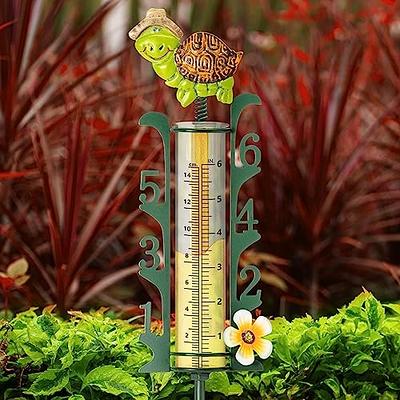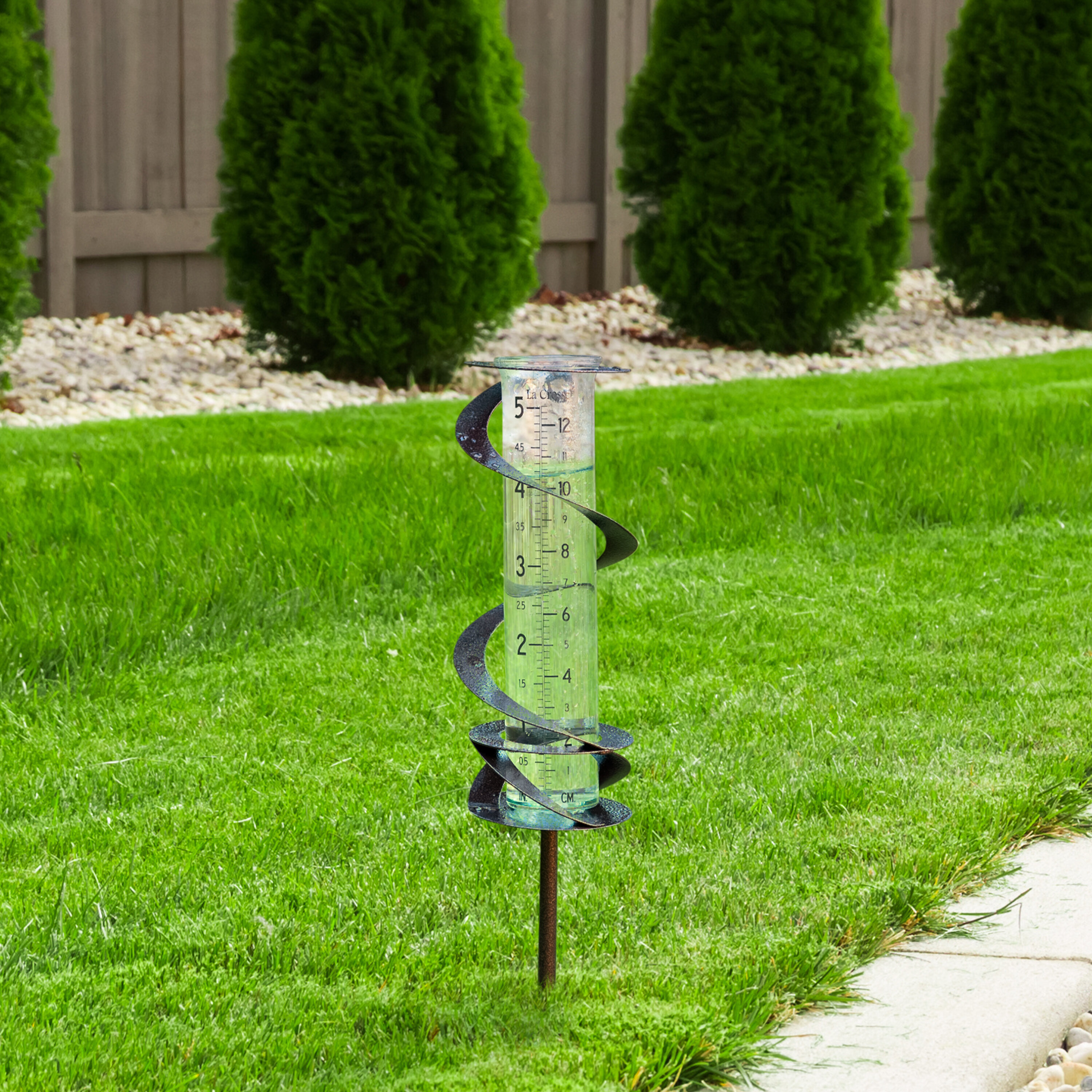Your Go-To Source on The Rain Gauge: Advantages and Practical Applications
Your Go-To Source on The Rain Gauge: Advantages and Practical Applications
Blog Article
Exactly How to Choose the Right Rain Gauge for Accurate Rainfall Information
To get trusted dimensions, it is vital to pick the best rain scale. Thinking about elements such as area, type, and precision of the rainfall gauge will certainly assist ensure specific data collection. Additionally, recognizing the maintenance and calibration treatments will add to the longevity and integrity of your rainfall scale.
Value of Selecting the Right Rain Scale
The value of selecting the appropriate rain scale hinges on acquiring trustworthy and precise rains data for precise meteorological evaluation. Rainfall information is crucial for a vast array of applications, including climate forecasting, hydrological modeling, and climate research study. Unreliable or imprecise data can bring about incorrect conclusions and flawed decision-making procedures.

Secondly, the precision and accuracy of the rain gauge are paramount. The gauge should have the ability to gauge rainfall with high precision, recording also little amounts of precipitation properly. It must also minimize mistakes because of evaporation, wind, and various other ecological elements. Normal calibration and upkeep are necessary to make sure ongoing precision.
In addition, the place and installation of the rain scale are vital considerations. It needs to be put in an open area, away from blockages that might impact rainfall dimensions. The gauge needs to be positioned at an ideal elevation and angle to stay clear of splashing and ensure correct catchment of rainwater.
Aspects to Consider When Selecting a Rainfall Scale
When choosing a rainfall scale, there are a number of key factors to take into consideration. These factors can greatly impact the accuracy and reliability of the rains information collected. The first variable to think about is the kind of rain gauge. There are different kinds offered, consisting of basic rain determines, tipping bucket rain gauges, and considering rain assesses. Each kind has its very own benefits and disadvantages, so it is very important to pick one that best suits your particular requirements and demands.
An additional factor to consider is the product of the rain gauge. Rain evaluates can be made from different materials, such as metal, glass, or plastic. The product selected should be immune and sturdy to weather problems, making certain that the rain gauge will withstand the elements and give exact dimensions with time.
Precision is likewise a critical variable to think about. Search for rainfall determines that have actually been calibrated and tested for precision. Attributes such as anti-splash rings and funnels can also boost the precision of the measurements.

Finally, take into consideration the climate and setting in which the rain gauge will be utilized. Various rain assesses are suitable for different environments, so it is crucial to choose one that is suitable for the problems in your area.
Different Kinds Of Rainfall Gauges Offered
To further explore the factors to think about when selecting a rainfall scale, it is crucial to recognize the various kinds of rainfall gauges available. The most common type is the conventional rain scale, additionally recognized as the round rainfall gauge.
Another type of rainfall scale is the tipping container rain gauge. This scale utilizes a seesaw-like system to collect and gauge rains. As the rain comes under the scale, it fills up one side of the bucket, creating it to empty the water and tip. The variety of pointers is counted digitally to identify the quantity of rains. Tipping bucket rain determines are popular for their accuracy and capacity to determine rains strength.
A third kind of rain scale is the weighing rainfall gauge. This scale utilizes an equilibrium system to determine the weight of the accumulated rains. As the rain comes under the scale, it is collected in a container attached to a balance. The weight of the water is measured, and the rainfall quantity is calculated based upon the weight. Evaluating rainfall evaluates are highly precise but can be a lot more pricey and need normal upkeep.
Finally, there are also remote rain evaluates that usage advanced innovation to gauge rainfall (The Rain Gauge). These evaluates use sensing units and transmitters to send data wirelessly to a main device. Remote rain evaluates are practical for monitoring rains in hard-to-reach areas or for large information collection
Just How to Identify the Accuracy of a Rainfall Scale
One way to evaluate the accuracy of a rainfall scale is by conducting routine calibration measurements. Calibration involves contrasting the readings of a rainfall scale to a basic measurement, such as site here a qualified rain gauge or a weather condition station with high precision. By contrasting the dimensions, any inconsistencies or mistakes in the rain gauge can be determined and accounted for.
To carry out a calibration measurement, start by collecting rainfall data from both the rain scale and the conventional dimension tool over a details time period, such as a month. Contrast the analyses and determine the difference between them. This difference is called the calibration mistake.
It is essential to note that calibration dimensions need to be done routinely, as environmental variables, such as temperature, wind, additional reading and particles, can influence the precision of the rain scale gradually. By conducting regular calibrations, any type of changes in the precision of the rain scale can be identified and modifications can be made accordingly.
In enhancement to calibration, it is also advised to clean and maintain the rainfall gauge consistently to ensure its precision. Eliminate any kind of debris or blockages that may influence the accuracy of the dimensions, and check for any type of signs of damage or put on that may need fixings or replacement.
Tips for Keeping and Calibrating Your Rainfall Gauge
Routine upkeep and calibration are important for ensuring the accuracy and integrity of your rainfall gauge in gauging rainfall data (The Rain Gauge). By adhering to a few easy pointers, you can ensure that your rainfall scale is correctly maintained and calibrated
First of all, it is very important to clean your rainfall scale frequently to stop any type of particles or dust from blocking the rain collection system. Utilize a the original source soft brush and a mild detergent to carefully cleanse the within and beyond the gauge. Wash it extensively with clean water and allow it to dry totally prior to re-installing it.
Second of all, it is recommended to calibrate your rainfall gauge at the very least annually. Calibration entails contrasting the dimensions of your rainfall scale with those of a relied on and exact referral scale. This will certainly aid you determine and deal with any kind of possible mistakes in your rainfall scale's dimensions.
To adjust your rain scale, gather a recognized volume of water utilizing a determining container and contrast it with the measurements videotaped by your rainfall gauge. Change the readings appropriately to guarantee accuracy.

Final Thought
Finally, selecting the ideal rain scale is essential for obtaining precise rainfall data. When picking a rain scale, variables such as spending plan, area, and purpose should be thought about. There are numerous kinds of rainfall determines offered, each with their own advantages and constraints. It is essential to routinely preserve and adjust your rainfall gauge to ensure its precision. By following these guidelines, precise rains information can be obtained for various applications.
There are various kinds available, consisting of basic rain evaluates, tipping bucket rain evaluates, and evaluating rainfall evaluates.To additionally check out the variables to take into consideration when choosing a rainfall scale, it is crucial to comprehend the different kinds of rainfall evaluates offered. The most typical type is the basic rain scale, also recognized as the cylindrical rain scale.An additional kind of rainfall scale is the tipping pail rain gauge. Calibration involves contrasting the analyses of a rain gauge to a common dimension, such as a qualified rainfall scale or a weather condition station with high accuracy.
Report this page